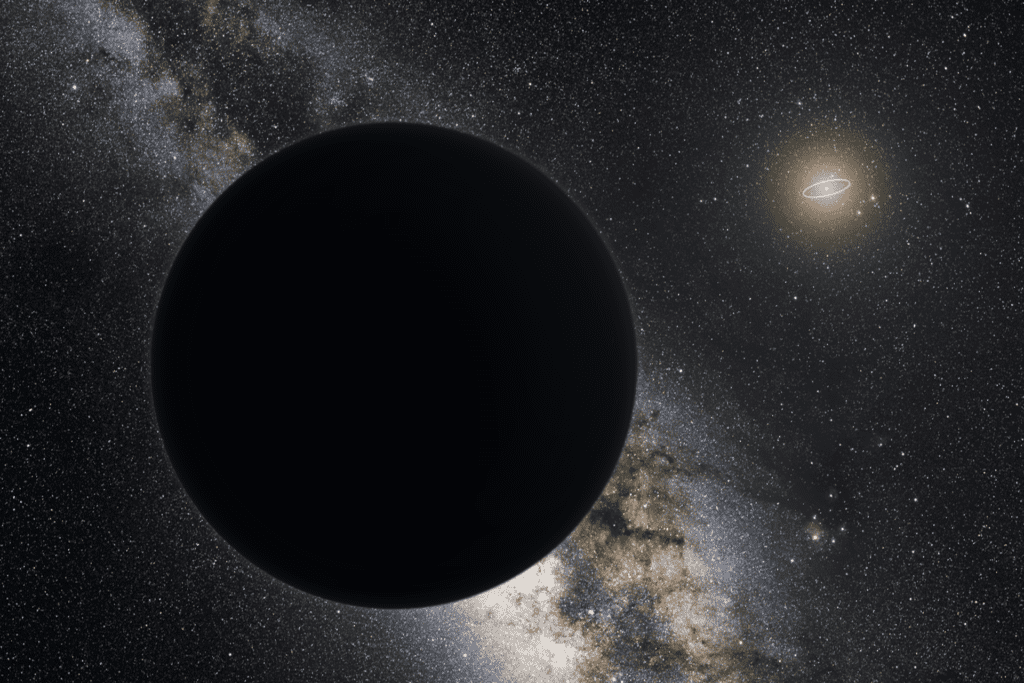Recently found exoplanet is so dark, it absorbs 99% of incoming light
ZME Science 1h ago
Related Coverage
[1804.05334] WASP-104b is Darker than Charcoal - arXiv
Most referenced arXiv 17 Apr 2018
Astronomers have investigated an exoplanet that’s so dark, it might as well be made completely out of charcoal (or more like Vantablack).
The planet in question, called WASP-104b, is classed as a hot Jupiter —
meaning it’s about as massive as Jupiter but orbits scorchingly close
to its parent star — and absorbs nearly 99% of the light it receives.
 Researchers
at the Keele University in Staffordshire, England, didn’t
discover WASP-104b, which was first described in 2014. Rather, the
authors reviewed a pool of new data provided by the Kepler Space
Telescope to learn more about the exoplanet, which is 466 light-years
away. For instance, we now know that WASP-104b orbits so close to its
parent star that it completes a full orbital rotation once every 1.76
days. However, the most striking characteristic of the planet is its
extraordinary light response — or lack of it, for that matter.
Researchers
at the Keele University in Staffordshire, England, didn’t
discover WASP-104b, which was first described in 2014. Rather, the
authors reviewed a pool of new data provided by the Kepler Space
Telescope to learn more about the exoplanet, which is 466 light-years
away. For instance, we now know that WASP-104b orbits so close to its
parent star that it completes a full orbital rotation once every 1.76
days. However, the most striking characteristic of the planet is its
extraordinary light response — or lack of it, for that matter.
Scientists estimate that the hot Jupiter absorbs nearly 99% of all the incoming light that reaches it, making it nearly invisible. It’s one of the darkest planets known to astronomers, the top spot belonging to a pitch-black exoplanet called TrES 2B, or Kepler-1b, located about 750 light-years away from Earth.
WASP-104b orbits extremely close to its parent star and, ironically, it’s precisely due to this proximity that the alien world is so dark. WASP-104b is tidally locked, meaning that just like Earth’s moon it always shows the same side to its host star, with the opposite face always facing away from the parent star. As a result, on one side there is a permanent day, while the other side experiences an endless night. Being so close to its yellow-dwarf star, the day side of WASP-104b is way too hot to allow clouds or ice to form, which normally brighten a planet and reflect light outward. Instead, WASP-104 is thought to be covered in a hazy atmosphere comprising atomic sodium and potassium, which are known to absorb many colors in the visual spectrum.
The astronomers estimate that WASP-104b absorbs between 97% and 99% of all the light it receives, making it appear darker than coal. In reality, however, the planet likely has a dark purple or red halo surrounding it, due to incoming solar radiation — it’s just that we can’t really tell from our vantage point, 466 light-years away.
The study was reported in pre-print resource arXiv, and is awaiting peer review.
Recently found exoplanet is so dark, it absorbs 99% of incoming light

Credit: Wikimedia Commons.
Scientists estimate that the hot Jupiter absorbs nearly 99% of all the incoming light that reaches it, making it nearly invisible. It’s one of the darkest planets known to astronomers, the top spot belonging to a pitch-black exoplanet called TrES 2B, or Kepler-1b, located about 750 light-years away from Earth.
“From all the dark planets I could find in the literature, this is top five-ish,” study author Teo Mocnik, a researcher at Keele University in Staffordshire, England, told New Scientist. “I think top three.”The astronomers learned all of this by employing the transit method, which involves measuring the minute dimming of a distant star as a planet passes in front of it. Along with the transit method, the Keele astronomers also measured the subtle gravitational wobbling WASP-104b inflicts on its host star.
WASP-104b orbits extremely close to its parent star and, ironically, it’s precisely due to this proximity that the alien world is so dark. WASP-104b is tidally locked, meaning that just like Earth’s moon it always shows the same side to its host star, with the opposite face always facing away from the parent star. As a result, on one side there is a permanent day, while the other side experiences an endless night. Being so close to its yellow-dwarf star, the day side of WASP-104b is way too hot to allow clouds or ice to form, which normally brighten a planet and reflect light outward. Instead, WASP-104 is thought to be covered in a hazy atmosphere comprising atomic sodium and potassium, which are known to absorb many colors in the visual spectrum.
The astronomers estimate that WASP-104b absorbs between 97% and 99% of all the light it receives, making it appear darker than coal. In reality, however, the planet likely has a dark purple or red halo surrounding it, due to incoming solar radiation — it’s just that we can’t really tell from our vantage point, 466 light-years away.
The study was reported in pre-print resource arXiv, and is awaiting peer review.
No comments:
Post a Comment